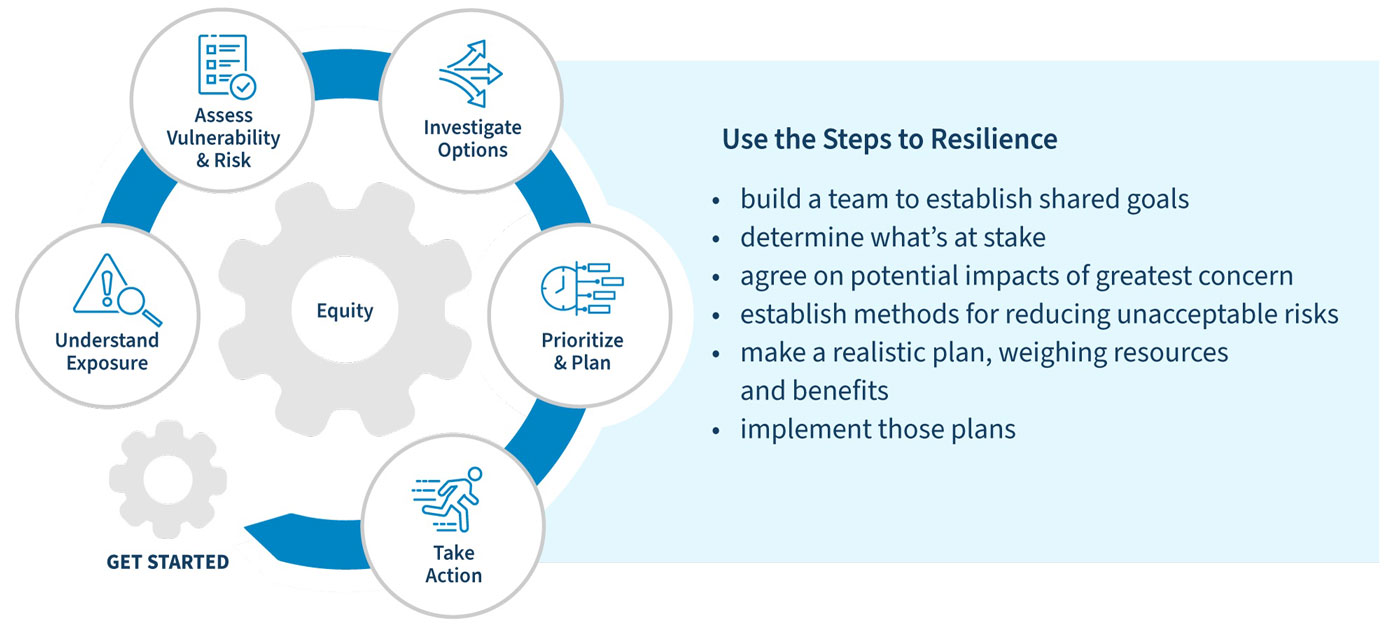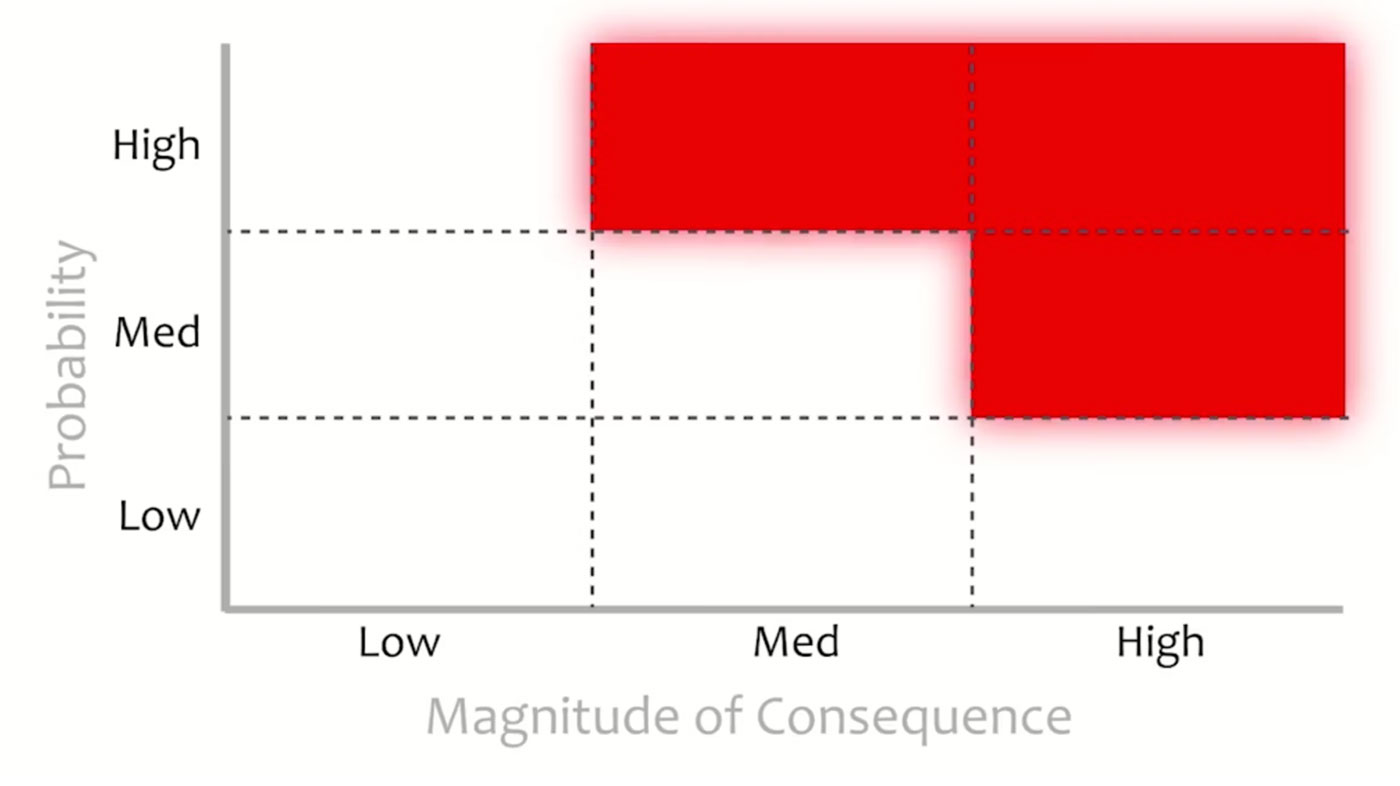What is Adaptation Planning
Adaptation planning is an iterative process of assessing, investigating, prioritizing, implementing, and monitoring and evaluating for continued assessment and planning.Why adaptation planning?
Gulf of Alaska fishing communities generally lack formal climate adaptation plans, and planning for commercial fisheries adaptation is not happening in the region otherwise. A handful of Tribes and Tribal organizations in the region have developed climate adaptation plans, focusing on mitigating vulnerabilities to the subsistence resources that their citizens rely upon. In stark contrast, municipalities in the region largely focus on mitigating greenhouse gas emissions rather than adaptation, and discourse on climate-fisheries interactions is strikingly absent from these documents. Nevertheless, communities in the region demonstrate substantial capacity for fisheries resilience planning more broadly within other community planning documents and Gulf of Alaska fisheries stakeholders have numerous, multifaceted ideas about how to bolster their resilience. This project will build upon these efforts to develop formal adaptation plans for regional fishing economies.
What is adaptation planning?
Climate change is highly localized and often idiosyncratic, making universal solutions for adaptation difficult. Climate adaptation planning is an iterative process that allows communities to understand and plan for localized vulnerabilities associated with climate-driven changes. Through iterations of assessment, planning, implementation, and monitoring and evaluation, communities develop strategies that are intended to minimize their risks from climate-driven changes. Climate adaptation planning is often a multi-year process and necessitates the participation of diverse community members with a variety of expertise and viewpoints.
At the heart of adaptation planning is an open, public process that is conducted through principles of equity. Communities must, therefore, consider not just how to minimize risks through adaptation planning but how to ensure that in doing so they do not exacerbate underlying inequities. Rather, communities should seek to explicitly address systemic issues through their adaptation planning process. A critical first step in that is to ensure the planning process is open and advertised to the public and that participation from underrepresented and disadvantaged groups is sought at the outset. Our project communities will undertake locally appropriate engagement and public meetings throughout the planning process.

Adaptation planning is an iterative process of assessing, investigating, prioritizing, implementing, and monitoring and evaluating for continued assessment and planning. Source: U.S. climate resilience toolkit.
Get started
The first step in adaptation planning is developing a project team and identifying scope. There is a strong connection between these two dimensions. The composition of the project team should reflect the necessary expertise associated with the scope of the plan. Conversations about the scope of the plan should include the geographic extent, sectors, and timeframe. The intent of this project is to develop adaptation plans for the fishing economies of Cordova, Kodiak, and Sitka as regional hubs that provide numerous services to their neighboring communities. As part of this planning process, there should be consideration of multiple timeframes covering diverse, potential climate impacts and scenarios.
The next critical step in the adaptation planning process is visioning success. “Visioning aims at a clear, concrete, imaginable picture of a desirable future for a particular audience, which guides the adaptive actions and processes needed to get there.” The intent is to develop a shared understanding of what the planning process is aiming towards, in as concrete and tangible terms as possible.
Assess vulnerability

Vulnerability assessments employ qualitative scoring and a traffic light system to understand and represent risks. Source: U.S. climate resilience toolkit.
Fisheries vulnerability in the Gulf of Alaska stands at the intersection of social, coastal, and ecosystem vulnerability. Local harvesting and processing revenues derived from mixed fisheries portfolios are subject to climate-driven changes on a species-specific basis (Spencer et al. 2019). Fisheries infrastructure is susceptible to a multitude of climate-driven coastal stressors that have been identified in the literature including sea level rise and increasing storm surge and extreme weather causing coastal erosion and flooding and saltwater intrusion (Colburn et al. 2016; Roukounis and Tsihrintzis 2022). Social vulnerability captures demographic and socioeconomic characteristics of populations or communities (e.g., poverty, education) that mitigate or increase the impacts of hazards (Cutter et al. 2009). Gulf of Alaska fishing communities’ social vulnerability is manifest in limited employment and income diversification, rural outmigration, an aging demographic, reduced services, and lack of workforce development (Szymkowiak and Kasperski 2021).
Explore a case study of assessing vulnerability in Prince William Sound across these dimensions
Investigate options
Numerous organizations and communities across the Gulf of Alaska are undertaking adaptation measures in the face of climate change and other fisheries stressors. In addition, there are a variety of case studies across the world of diverse adaptations by fishing and coastal communities. Through adaptation planning, communities identify potential strategies for reducing risks through developing wide-ranging lists based on brainstorming and exploring what has been done elsewhere.
Explore project partners’ climate resilience efforts:
Prioritize and plan
In the next step of the planning process, communities consider their list of potential adaptation strategies and undertake a prioritization process. Each strategy needs to be considered according to its potential benefits, costs, and feasibility. The feasibility dimension can be a simple process of evaluating the community’s capacity to effectively implement the strategy. But more holistic models of feasibility assessments include various considerations across economic, technological, institutional, social, environmental, and geophysical dimensions.

Adaptation strategies need to be evaluated according to their benefits for resilience, costs, tradeoffs, and feasibility. Source: U.S. Climate Resilience Toolkit
One of the last steps in adaptation planning is developing an implementation plan. For each strategy, according to its priority ranking, communities need to identify a timeframe for implementation, specific next steps, estimated costs, a funding source, and partners who will work together to implement the action. These are often identified in tables that facilitate broader public communication, as in the example below.
Example implementation table of adaptation strategies
| Priority | Adaptation Strategy | Next Steps | Partners | Timeframe | Estimated costs | Funding source |
|---|---|---|---|---|---|---|
| 1 | Enhance fisheries habitat restoration | Identify stream segments most suitable and most efficient for restoration | Science and fishing organizations | 1-2 years | $50,000 | NFWF |
| 2 | Expand transition of diesel vessel engines to hybrid engines | Develop lessons learned and outreach materials to solicit more regional interest from fishermen | Fishing organizations, marine support services, science organizations | 3-5 years | $500,000 | US DOE |
Take action – then iterate…
The last step in the adaptation planning process is implementation. When funding becomes available, communities should implement their adaptation strategies according to their implementation tables. Once implemented, it is important to evaluate whether the strategies are producing the expected results. Therefore, monitoring and evaluation of adaptation implementation are critical to the ultimate success of the adaptation planning process. Adaptation is inherently an iterative process, where evaluation of the implemented adaptation strategies and of the realized and predicted outcomes of climate change need to be reassessed, as part of a continued planning process.
